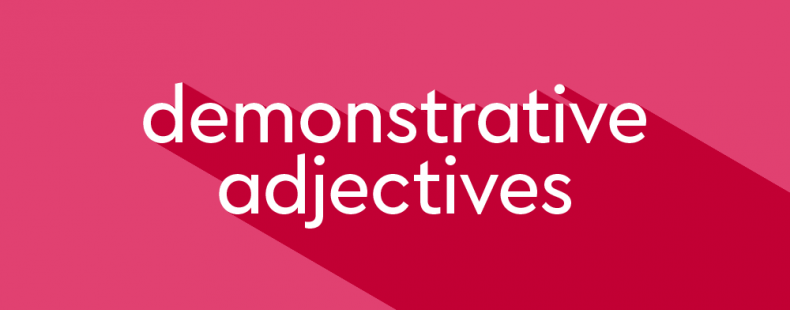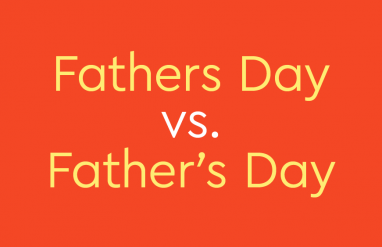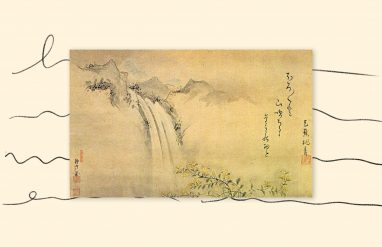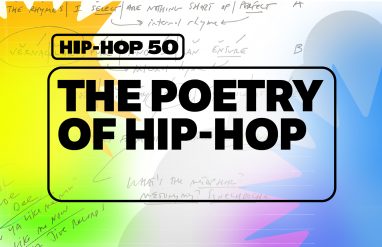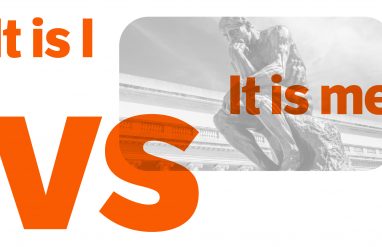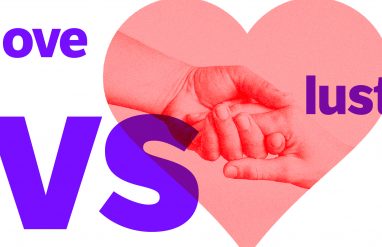If you’ve studied grammar, you know that adjectives are words that we use to modify and describe nouns and pronouns. While there are many types of adjectives, right now we’re going to look at some really cool adjectives called demonstrative adjectives. What makes them so cool? Out of all of the adjectives, they are the masters of space and time! If that has piqued your interest, read on to learn more about these amazing adjectives.
What is a demonstrative adjective?
A demonstrative adjective is an adjective used to specifically describe the position of something or someone in space or time. The most commonly used demonstrative adjectives are this, that, these, and those.
There are two major reasons we use demonstrative adjectives:
1. First, we use demonstrative adjectives to describe the physical location of something relative to the speaker. The adjectives this and these refer to closer objects or people, and the adjectives that and those refer to objects or people further away. This and that are used to modify singular nouns, and these and those are used to modify plural nouns.
This will make more sense with an example. Let’s say you’re in a room with two cats. One cat is purring happily against your leg, and the other is napping on the floor on the other side of the room. Your friend asks you which cat you like better. If you prefer the cat right next to you, you would say “I like this cat.” However, if you prefer the cat far away from you, you would point to it and say, “I like that cat.” In this case, demonstrative adjectives helped you differentiate between the two friendly felines based on their physical locations.
2. The second main way we use demonstrative adjectives is to refer to moments in time. Just as in the previous examples, this and these are used to refer to current, recent, or closely upcoming moments in time while that and those are used to refer to moments that occurred or will occur further away from the current moment. For example:
- This day has been great! (This indicates a day close to the present moment, i.e. the current day.)
- I remember that day like it was yesterday. (That indicates a day that occurred long before the current moment, possibly the distant past.)
- These next couple of Saturdays should be fun. (These indicates that the Saturdays will occur in the near future.)
- Those hard years took a toll on him. (Those indicates that the years happened in the relatively distant past.)
List of demonstrative adjectives
As mentioned already, the four most commonly used demonstrative adjectives are:
- this
- that
- these
- those
Some style guides or grammar resources may also describe ordinal numbers as demonstrative adjectives because they can also specifically describe the location of something (in a series, list, etc.). Ordinal numbers include words such as first, second, third, etc. and their numerical equivalents of 1st, 2nd, 3rd, etc. If you consider these to be demonstrative adjectives, the list of demonstrative adjectives is literally infinite.
Where do you include a demonstrative adjective in a sentence?
Demonstrative adjectives are only used before the nouns and pronouns they modify. In particular, demonstrative adjectives always come first in adjective order:
- This green ball is mine.
- That huge, ferocious lion looks really hungry.
- I want these sparkly sunglasses.
- Those sly, suspicious-looking sneaks have shifty schemes.
Demonstrative adjectives and determiners
Unlike nouns and verbs, the different categories of adjectives are often less defined. For example, many style guides or sources of grammar advice consider demonstrative adjectives to actually be a class of words known as determiners, in which case they may be referred to as demonstrative determiners or even just demonstratives.
Unlike most other adjectives, the demonstrative adjectives that, this, those, and these can all also be used as demonstrative pronouns as in the sentence This is a disaster. Additionally, demonstrative adjectives cannot form superlative or comparative adjectives. Something can be bigger (the comparative adjective of big) than something else but something can’t be “that-er” or “these-er” than something else.
While these qualities may support classifying demonstrative adjectives as a different figure of speech, we consider the words this, that, these, and those to be adjectives when used as demonstrative adjectives. Not every style guide will take this approach, however, so don’t be surprised if you see words this, that, these, and those referred to as determiners even when used as if they were adjectives.
Demonstrative adjective examples in a sentence
In each of the following sentences, the demonstrative adjective is in bold.
Example #1
- This watch looks really expensive. (The demonstrative adjective this indicates that the watch is nearby. You might be holding it in your hand or it is on display close to you.)
Example #2
- Rebecca’s wedding was incredible; she will never forget that day. (The demonstrative adjective that indicates that the day happened in a time far from now.)
Example #3
- I can’t decide if I want to eat this cake or that one. (The demonstrative adjective this modifies the noun cake to indicate it is close by. The demonstrative adjective that modifies the pronoun one to indicate that the item is located further away.)
While you’re at it, take a look at this article on compound adjectives and how to use them.
Demonstrative adjective rules & best practices
It is important to remember that demonstrative adjectives are adjectives, which means that they can only be used to modify nouns and pronouns. When they do, they are always used before the nouns they modify, and they always come first in adjective order:
❌ Incorrect: I want to hug cute puppy that.
❌ Incorrect: I want to hug cute that puppy.
✅ Correct: I want to hug that cute puppy.
The demonstrative adjectives this and that are used with singular nouns and pronouns. The demonstrative adjectives these and those are used with plural nouns and pronouns. To avoid grammatical errors, make sure to identify whether or not the noun or pronoun is singular or plural, so that you use the correct adjective.
- This book is interesting. (Book is a singular noun.)
- She wants to climb those hills. (Hills is a plural noun.)
- These bacteria are toxic to humans. (Although it may not look like it, bacteria is a plural noun and so it must use either these or those.)
One final word of warning: the words this, that, these, and those aren’t only used as adjectives. All of these words can also be used as demonstrative pronouns and the word that can also be used as an adverb or a conjunction. If these words are not being used as an adjective, none of the rules or restrictions mentioned previously will apply. For example:
- I am holding my toy train in my right hand. Out of all of my toys, this is my favorite. (This is used as a pronoun and can stand by itself as the subject of the sentence.)
- It was a funny movie. I just didn’t think it was that good. (That is used as an adverb so it can modify the adjective good.)
- Ryan is looking for the new hat that he bought at the store yesterday. (That is a conjunction used to introduce a dependent clause.)
We think you’ll like this writing tool
You don’t have to travel in time and space to improve your grammar! Take your writing to the next level with Thesaurus.com’s Grammar Coach™, which catches grammar and spelling errors and provides Thesaurus-powered synonym suggestions. Using machine learning, this unique tool can help you spot the difference between your possessive, demonstrative, and comparative adjectives—and much more.
